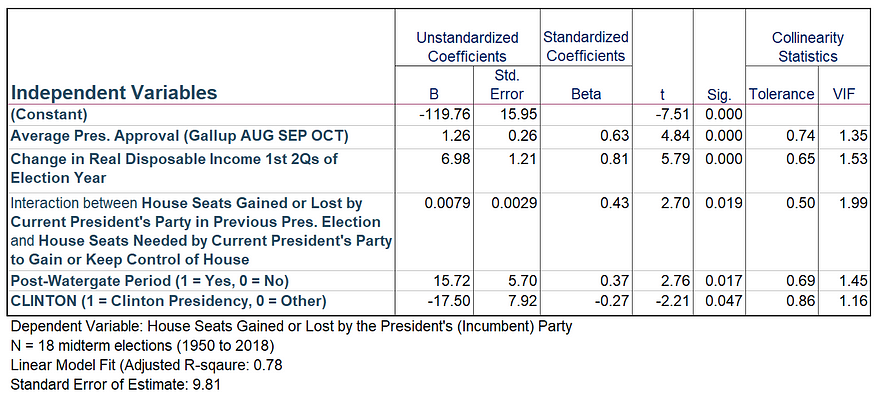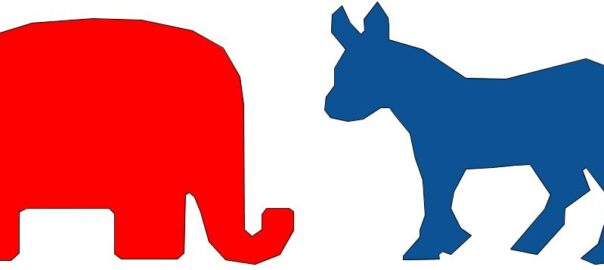Kent R. Kroeger (Source: NuQum.com, August 21, 2022)
[Note: The dataset used in this data essay is available on GITHUB.]
As energy prices start to fall from their early 2022 highs and President Joe Biden seems to be convincing Americans that the recently passed Inflation Reduction Act (IRA) is truly a landmark piece of legislation, more and more political pundits are calling into question previous predictions that the Republicans are poised to regain control of the U.S. House and Senate in the upcoming midterm elections.
“After months of ‘Democrats are doomed’ chatter, there’s been a definite shift in mood and momentum toward the party in power,” writes Cook Political Report analyst Amy Walter.
In all probability, regaining control of the Senate is a lost cause for the Republicans. When the GOP’s own Senate minority leader, Mitch McConnell, openly questions the quality of the party’s Senate 2022 challengers — Herschel Walker (Georgia) and Dr. Mehmet Oz (Pennsylvania) come to mind — you know things aren’t looking good.
[Note to both political parties: Amateur politicians can often be called by another name: losing candidates. U.S. House and Senate challengers are more successful when they’ve had elective experience at other levels of government.]
Presently, PredictIt, a political futures market, is giving the Democrats a 61 percent chance of keeping control of the Senate (see Figure 1), and expects the GOP to hold either 48 or 49 Senate seats in the end.
Figure 1: Current PredictIt Forecast for Control of U.S. Senate (as of Aug. 21, 2022)

The news is somewhat better for the GOP’s prospects in the House, where PredictIt still gives the party a 79 percent of regaining control (see Figure 2) — though that is down significantly after the U.S. Supreme Court overturned Roe v Wade in its Dobbs decision in mid-June (see Figure 3).
Figure 2: Current PredictIt Forecast for Control of U.S. House (as of Aug. 21, 2022)

Figure 3: PredictIt Forecast for Control of U.S. House over past 90 days

Fivethirtyeight.com gives the GOP a similar probability of regaining control of the House and, likewise, shows that this probability has declined significantly since the Supreme Court’s Dobbs decision.
Are these adjustments in favor of the Democrats warranted?
My Prediction for the 2022 U.S. House Midterm Elections
It is hard to argue that the Republicans haven’t lost significant electoral momentum since the Dobbs decision and the ongoing news that former president Donald Trump is under an FBI investigation for allegedly removing classified defense and security intelligence from the White House as he left office.
If I were a betting man, I would already have dumped my shares in ‘GOP regains Senate’ futures (at a considerable loss, I might add) and would seriously consider hedging my bets on my ‘GOP regains the House’ contracts.
But I am not a gambler. I’m too lazy.
Rather, I like to make my predictions early and stand by them, come hell or highwater.
So here is an econometric model using aggregate data for 18 U.S. House midterm elections (1950 to 2018). The model is based largely on the work of political scientists Michael Lewis-Beck and Charles Tien (2014 midterm model), who were themselves building off the pioneering election forecasting work of economist Ray C. Fair.
With some minor modifications (i.e., binary control variables for the post-Watergate period and the Clinton presidency), the econometric model I estimated to forecast the 2022 U.S. midterm elections is as follows:
Figure 4: Linear model of House seat gains/losses by President’s Party in Midterm Elections (1950 to 2018)

The key independent variables in this model are:
- The average presidential approval as measured by the Gallup Organization for the months of August, September and October in the election year,
- The percent change in real disposable income during the 1st two quarters of the election year, and
- The interaction between two variables: (1) The number of House seats gained (+) or lost (-) by the current president’s party in the previous presidential election, and (2) the number of seats needed by the current president’s party to gain (+) or keep (-) control of the House.
Given the current values (or estimates) for these variables heading into the 2022 midterms:
- Estimate of Average Aug.-Oct Presidential Approval: 41 (RCP’s current aggregated poll measure of Biden’s presidential approval)
- Percent change in real disposable personal income in 1st two quarters of 2022: -0.39 (Source: St. Louis Federal Reserve)
- The number of House seats gained (+) or lost (-) by the current president’s party in the previous presidential election: -13
- The number of seats needed by the current president’s party to gain or keep control of the House: -5,
…my model predicts that the Democrats will lose 55 House seats in the upcoming midterms.
That is definitely a prediction that puts me out of a analytic limb. And why does this model strongly lean towards a Republican landslide, at least in the House races?
This model is driven by the power of economic factors and presidential approval in explaining past midterm elections, along with the tendency that the president’s party usually loses a significant number of seats in midterm elections (an average of 27 in the 18 midterm elections from 1950 to 2018).
Still, a forecasted loss of 55 House seats (!) says a lot about how my forecast model sees the economy and Biden’s approval as too far gone to help the House Democrats in November.
So, as of now, regardless of the genuine anger generated by the Dobbs decision or what happens in the Trump investigation, my forecast model has no reason to believe the economy or Biden’s approval are going to help the House Democrats in the midterms.
- K.R.K.
Send comments to: kroeger98@yahoo.com
